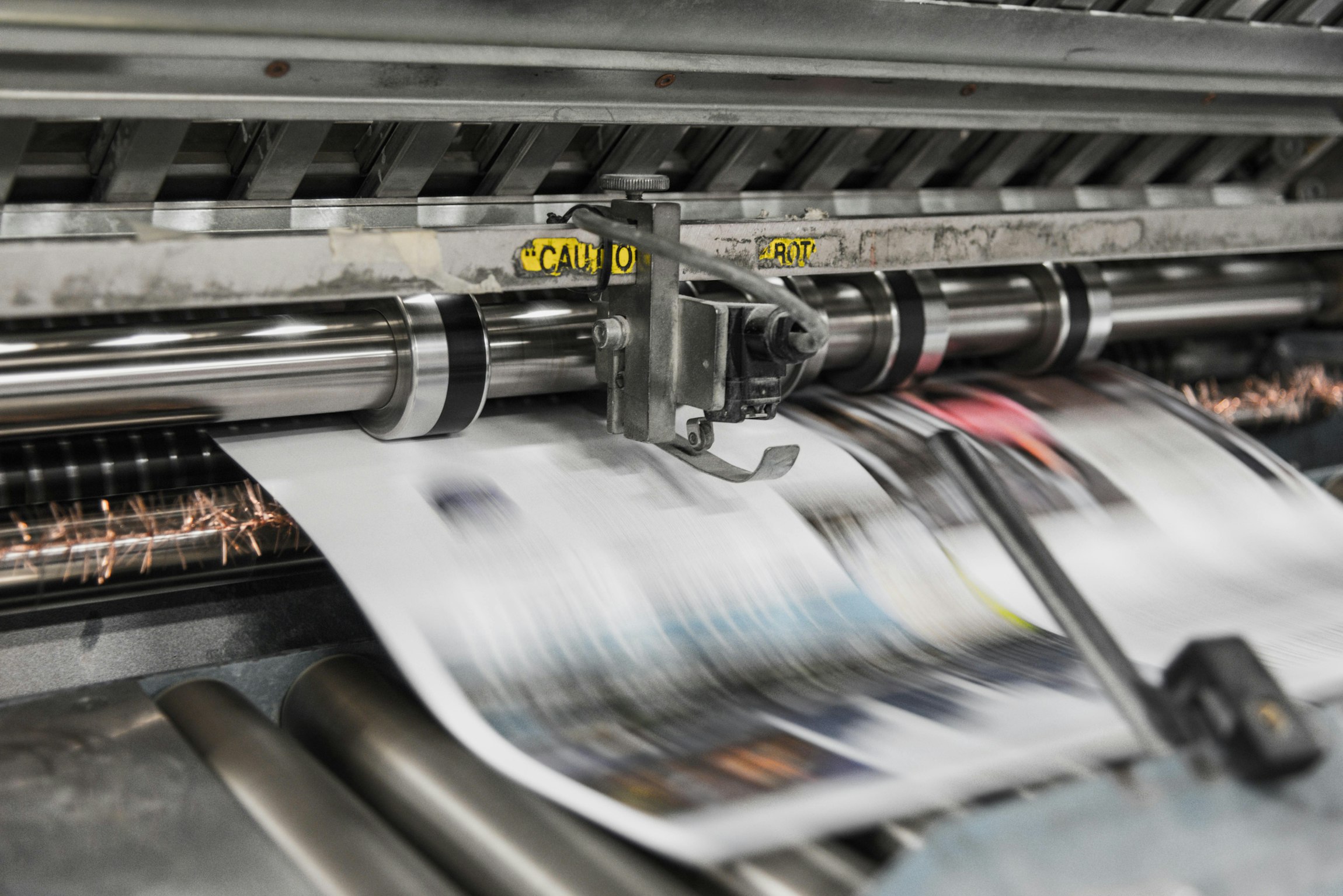
Introduction
Printing has evolved from reproducing physical objects, to making digital files into physical objects. This is made possible through the advancement of hardware to accommodate shared information in its interdisciplinary functionality. This timeline follows the progression of printing from its conception to current practical applications. Included are a few highlights working as a general overview of printing hardware’s changes over time.
Process
I was inspired by the ways that data visualization can move through both digital and physical forms. The printing process is one way this transformation can happen. A visualization then, can perform in physical space as news, sculpture or even with viewer interaction. Of course, data visualization can also be projected or manufactured as virtual reality, but this timeline focuses on printing as the main mechanism of physical manifestation.
First, I gathered research materials in order to populate the content for my timeline. Knowing that my timeline would only represent five to ten events, I decided to focus on a limited geographic location and remarkable contributions to printed media. The required source material related to printing in the U.S. is outlined here:
The capacity to print in the U.S. was in conjunction with the founding of Harvard University in 1638, and it worked by using movable type. The first American Printing Press was constructed in Massachusetts and remains a progenitor in publishing and distribution practices, attributing the practice of Google Books branch in Cambridge, MA. After the use of the letterpress became popularized, the rotary press was invented over one hundred years later. It was created with a large drum which often needed repairs, but it was much faster and required less labor as it is a continuous automatic press. Word processing on machines allowed for laser printing adapted from a technique called xerography. This technology is the foundation of what is used today. Then, I chose to represent the invention of 3D printing on the timeline. This was originally produced with organic materials to create objects from digital files. Finally, wide format printing follows with the invention of UV inks and wide print beds. This is useful for large posters and fine art prints that can contain data visualization.
With the necessary research, I began populating my timeline using Timeline JS. Below is an explanation of the materials of how they work.
Materials
Timeline JS is an open-source tool that can create customizable, embeddable timelines without disrupting the core functionality. This works by creating a copy of the official Timeline JS3 template to populate content for the timeline.

After using the research materials to populate the columns in the template, I previewed the timeline by publishing it to the web and copying the link in the search bar above the template to the Timeline JS site. The was very useful as some of the images needed to be attributed and the formatting was easy to review.
Results

Organizing the research I gathered chronologically created an easy to navigate visualization. It is clear, precise and user-friendly. I asked a few people to review the timeline. Their feedback was similar. If the timeline were too long the side scroll function would become tiresome. The Timeline JS site cautions this and the particular constraint of this exercise also avoid the problem of scrolling through too many events.
The timeline shows images that resemble the hardware described in the title and text, and it was an important choice for the quality of the images to reflect the era in which the hardware was taken so as to not seem so anachronistic.
Reflection
Because the Timeline JS tool is open-source, I would recommend it to colleagues for future use. I enjoyed the ease and familiarity of the template. I will say that some of the open-source image sites I have used in the past were not compatible with the template, but there were many options to offset that issue. I will continue to use this tool. In the future, I’d like to explore the capability of sharing events with specific dates and times or eras. Organizing information chronologically in a timeline is a useful way to communicate evolution, trends and progress.